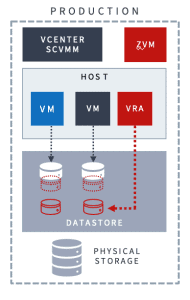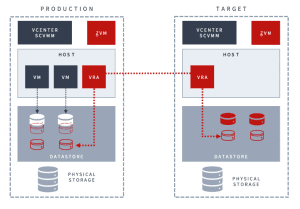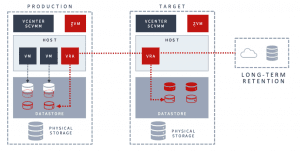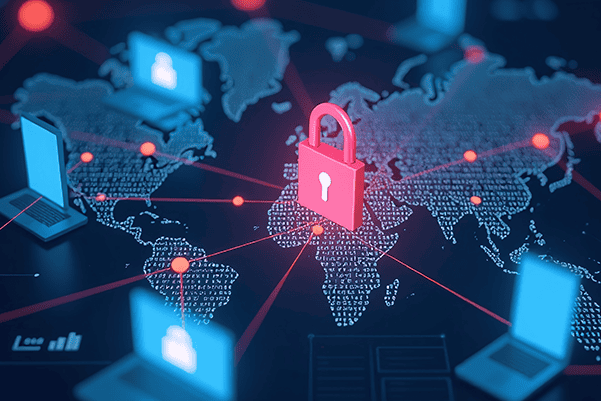
Beyond legacy backup and DR: It’s all about the recovery
Legacy backup
Backup and disaster recovery solutions are merging. Backup vendors, large and small, are looking to incorporate disaster recovery and orchestration into their platforms. Coming from market and technical leadership in disaster recovery for a decade here at Zerto, we see why legacy backup can’t meet modern recovery expectations, let alone trusting backup for mission critical applications. Why?
Legacy backup has only incrementally innovated over the decades but hasn’t changed its foundation: copying data and storing it somewhere. Whether appliance-based, storage, or even newer versions of backup, these solutions still bring:
- Storage, performance, and production challenges of VM snapshots
- High RPOs (i.e., daily backup)
- Inability to recover multi-VM applications to one single point in time as one consistent unit
- Complex architecture requiring dedicated storage, software agents, proxies, etc.
- Scale impediments
How is Zerto different?
Using continuous data protection (replication and journaling technology) to protect and recover mission critical applications with industry leading RPOs and RTOs. Customers easily resume operations without interrupting the business in the face of disaster, even cyber-attacks.
Zerto brings a next-generation architecture to backup and disaster recovery. Using a software-only, scale out approach we’re helping organizations protect and recover data quickly and at scale. At a high level we differ from backup in a few key areas:
- Always-on replication instead of VM snapshots. This means no more daily backups and high RPOs.
- Journal-based recovery so you can simply select a checkpoint (~ 5 seconds apart) and restore/recover files, folders, VMs, applications, and entire sites.
- Application-centric recovery to consistently recover multi-VM applications consistently to one specific checkpoint.
In a nutshell, Zerto is providing a flexible solution with leading RPOs to recover/restore data from any location, from local production and secondary sites to cost effective cloud storage. Let’s start with the most frequent backup operations: file/folder restores from corruptions or deletions.
Local continuous backup
These localized micro-disasters can include accidental file deletions, new software bugs, wrong application objects being zapped, files and folders being accidentally overwritten, and even malicious encryption of files. Such micro-disasters do not often warrant failing over a set of VMs or even an entire VM to a DR site. Instead, the objective is to get operational quickly. “Quickly” translates into least amount of data moved across the least distance.
Traditionally, organizations have relied (and continue to rely) on backup applications to fulfill recovery scenarios via restores. However, Zerto’s one-to-many replication capabilities enable the simultaneous replication to production and to a secondary DR site. This local replication enables a continuous backup approach that allows you to instantly restore applications, VMs, folders, and files without impact to production or the data loss associated with legacy backup. With Zerto’s local continuous backup, users can:
- Recover from file deletions
- Restore data from corruptions
- Recover from ransomware attacks that are discovered quickly (ex. Crypto Locker)
Disaster recovery
Local replication is only one half of Zerto’s replication. While you’re using Zerto to replicate locally and solve for a high percentage of backup scenarios, you’re also replicating to a warm secondary site. This is a typical disaster recovery use case. It could be another on-premises site, a managed service provider, or the public cloud. This means protecting the “crown jewels” of your environment.
Zerto gives you the ability to:
- Failover, failback, and move entire sites and applications without downtime or data loss
- Recover sites and applications in a few clicks via its automation and orchestration.
- Perform testing in an isolated environment as often as you’d like, without interruption
Long-term retention
Then there’s the other half of backup, long-term retention.
Many organizations have archival needs, some even must store data for years. Since backup technology has already obtained a copy of the production data, organizations opt to keep the data in the backup apps for longer periods to fulfill compliance and regulatory requirements.
With Zerto, you can simply copy data to a long-term retention repository, on-premises or in the cloud. This means you can store data as long as you want using an on-premises purpose-built backup appliance (PBBA) or storage tiers within public clouds like Microsoft Azure and AWS (i.e., AWS Glacier).
With the ability to restore a file directly from long-term retention, you’re able to have quick access to retained data and meet compliance.
Moving beyond legacy backup and disaster recovery
We don’t silo backup and disaster recovery. At Zerto, it boils down to recovering data as quickly as possible with the least data loss possible. From ransomware to outages, we’re ensuring that all of your applications remain available and without data loss.
On July 29th, we announced the availability of Zerto 9. We discussed and did demo Zerto’s ability to deliver instant ransomware recovery and how organizations are rethinking their data protection strategy using Zerto. Watch this on-demand webinar by clicking here.
Here are additional resources discussing Zerto’s unique approach to backup:
- Gorilla Guide: Continuous Backup and Recovery
- Technology Comparison: Zerto vs traditional backup
- IDC Whitepaper: The State of Data Protection and Disaster Recovery Readiness 2021



 Andy Fernandez
Andy Fernandez 

